Solo Travel Destination: Toledo, Spain
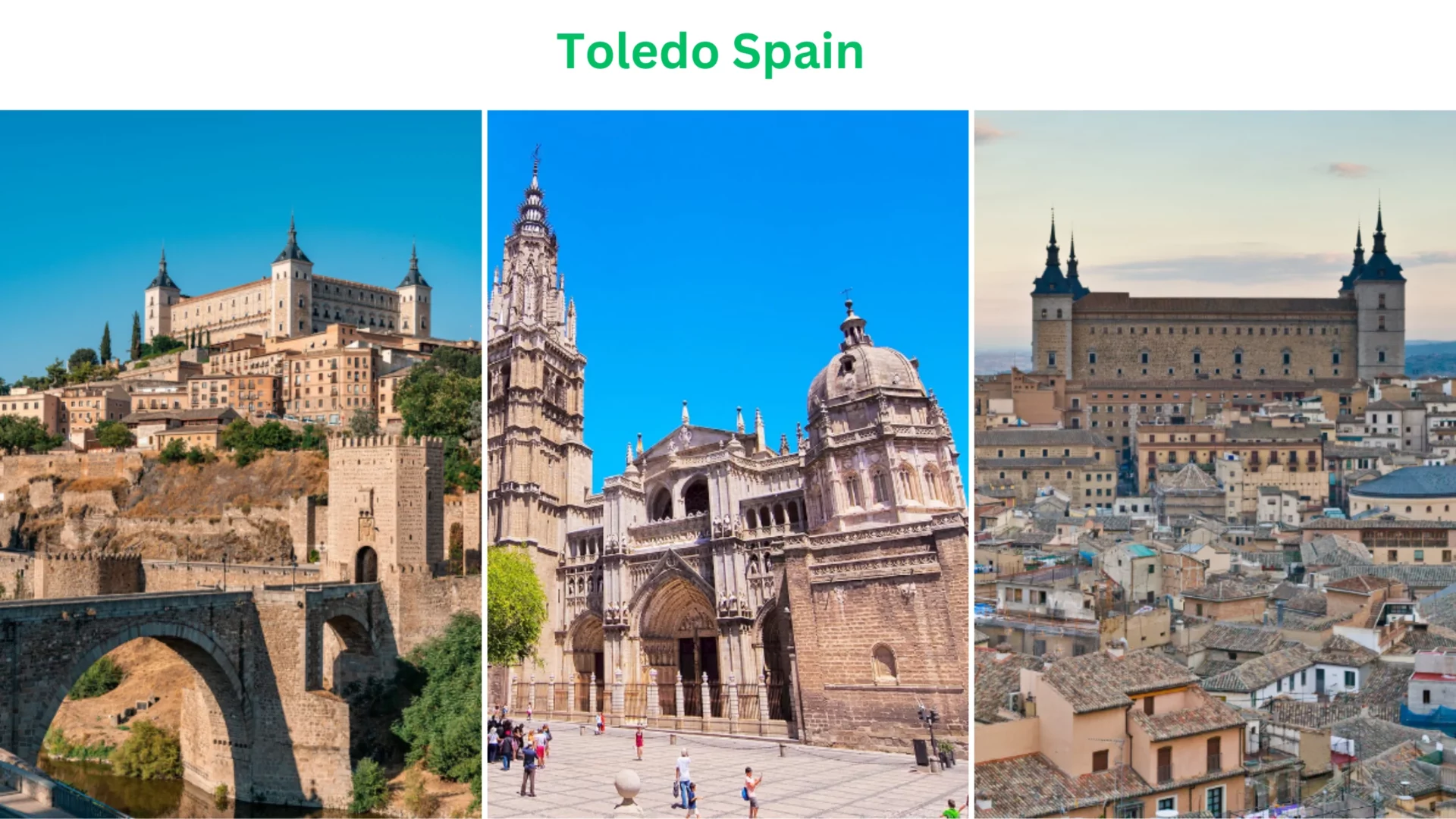
Toledo, Spain, a city on a hilltop above the Tagus River, is a captivating destination embodying Spanish history and culture. With a heritage spanning over two millennia, Toledo has been influenced by various civilizations, leaving behind a rich tapestry of architectural wonders and artistic treasures. Its historic centre, a UNESCO World Heritage Site, is a labyrinth of narrow streets adorned with medieval buildings, churches, and synagogues.
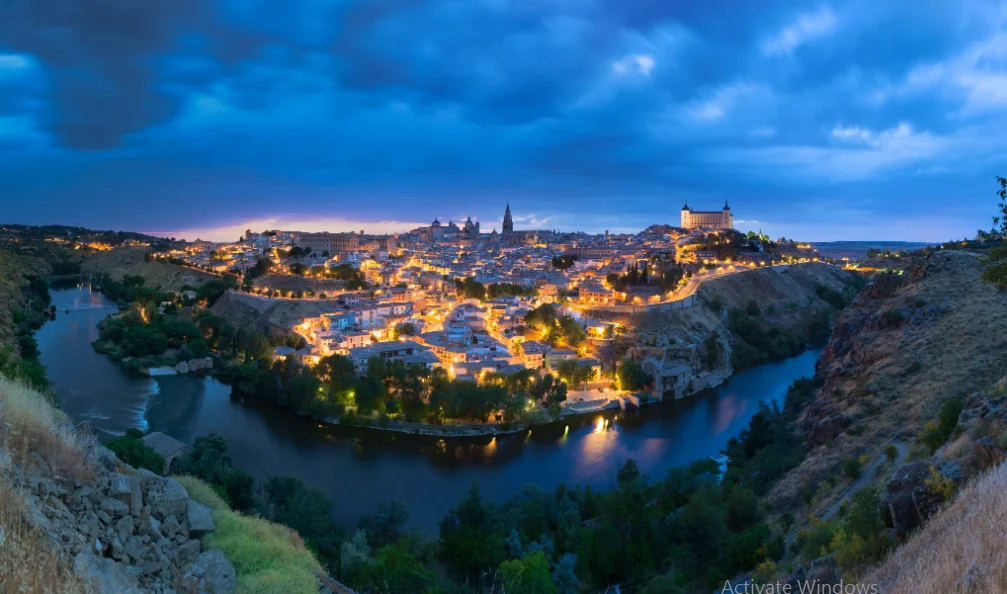
From the towering Alcázar fortress to the magnificent Toledo Cathedral, the city showcases a harmonious blend of Gothic, Renaissance, and Mudéjar architecture.
Toledo’s reputation as the “City of Three Cultures” reflects its unique coexistence of Christian, Jewish, and Muslim communities throughout history. Today, visitors can wander through its charming streets, explore world-class museums, indulge in traditional cuisine, and witness the timeless beauty that makes Toledo an enchanting destination.
What is Toledo, Spain, famous for?
Toledo, Spain, is famous for its rich history and cultural heritage. It is renowned for its stunning medieval architecture, including the Toledo Cathedral, Alcázar fortress, and the intricate Toledo City Walls. The city is also known as the “City of Three Cultures” due to its harmonious coexistence of Christian, Jewish, and Muslim communities throughout history.
Toledo has been a center for art, producing renowned artists like El Greco. Additionally, it is recognized for its traditional crafts, such as sword-making and Damascene metalwork, adding to its reputation as a hub of cultural significance.
Destinations at Toledo, Spain
Toledo, Spain, is a captivating destination steeped in history and culture. Toledo offers a glimpse into its rich past with its medieval cityscape, ancient city walls, and stunning architectural landmarks like the Alcántara Bridge and Bisagra Gate.
Visitors can immerse themselves in the art world at the El Greco Museum, explore the Sephardic Museum, or marvel at the architectural wonders of the Church of San Ildefonso and the Hospital de Tavera. Toledo’s unique blend of heritage and beauty makes it a must-visit destination for history enthusiasts and art lovers.
1. Alcázar of Toledo At Toledo Spain
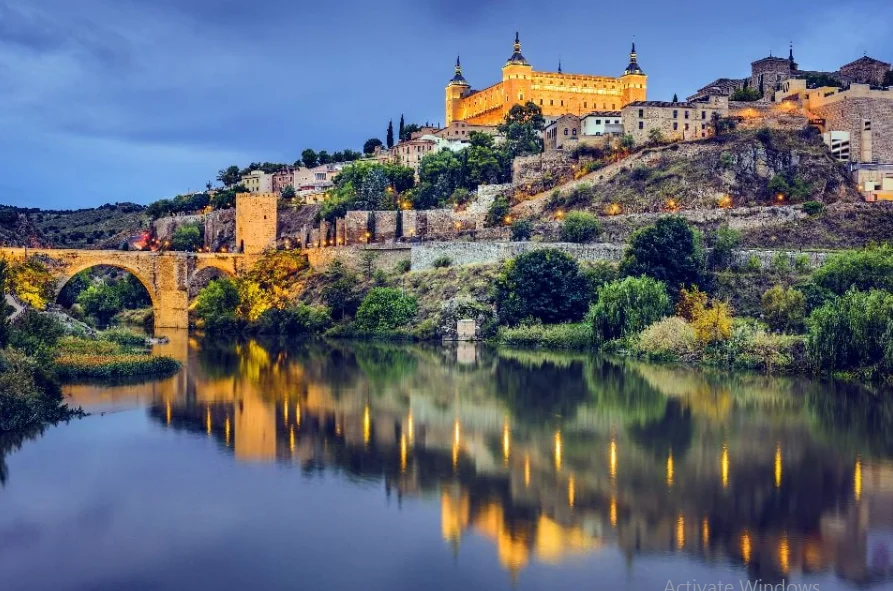
The Alcázar of Toledo, located in Toledo, Spain, is a majestic fortress on a hill overlooking the city. Its rich history dates back to Roman times, and it has served as a royal palace and a military academy and now houses the Army Museum. Its impressive architecture and panoramic views offer visitors a glimpse into the city’s past.
2. Toledo Cathedral At Toledo Spain
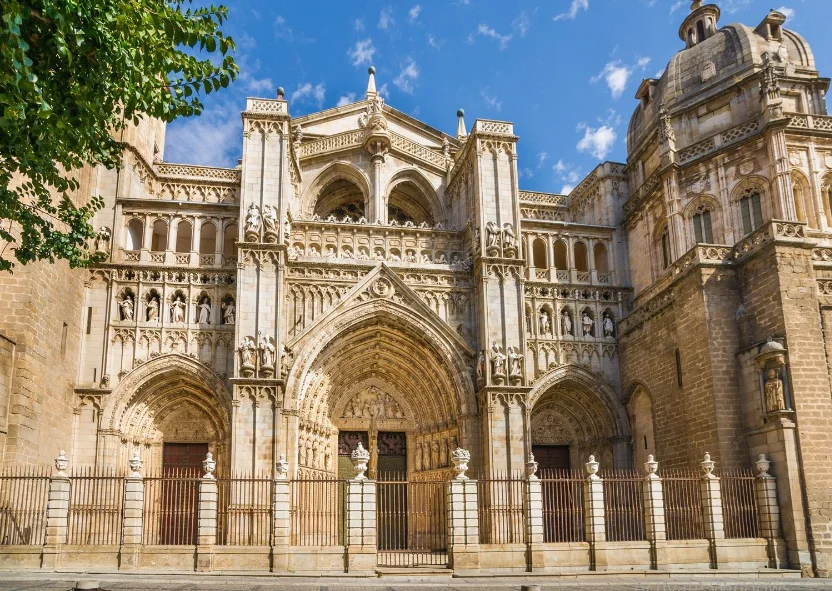
Toledo Cathedral, also situated in Toledo, Spain, is a magnificent example of Gothic architecture. Its construction began in the 13th century and continued for over 250 years. The cathedral’s intricate façade, grand interior, and stunning stained glass windows make it a must-see attraction. It is also home to numerous religious artworks, including masterpieces by El Greco.
3. Puente de San Martín
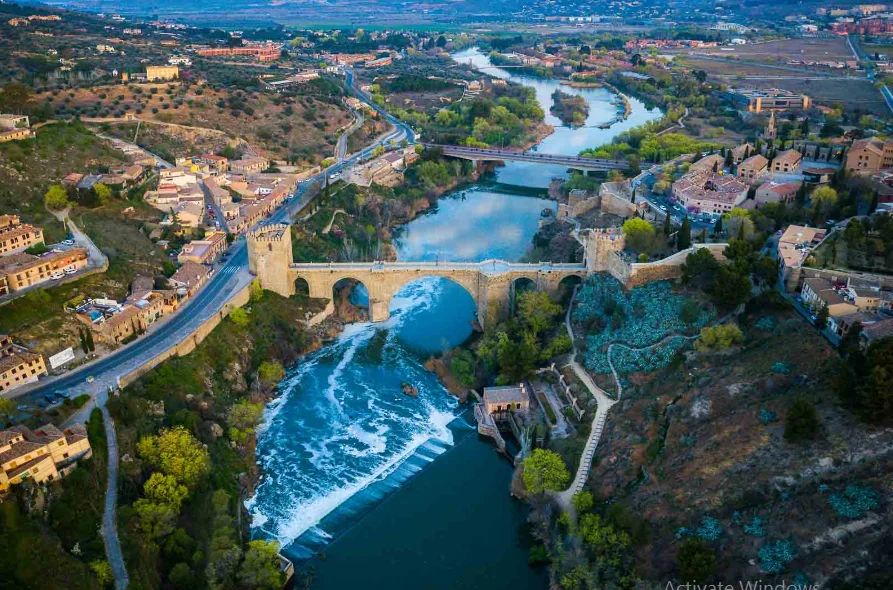
Puente de San Martín, a historic bridge in Toledo, Spain, spans the Tagus River. Built-in the 14th century, it showcases medieval engineering marvels. The bridge features a central arch flanked by two smaller arches adorned with defensive towers. Visitors can enjoy breathtaking views of the river and the city from the bridge, making it a popular spot for photography and sightseeing.
4. Santa María la Blanca Synagogue
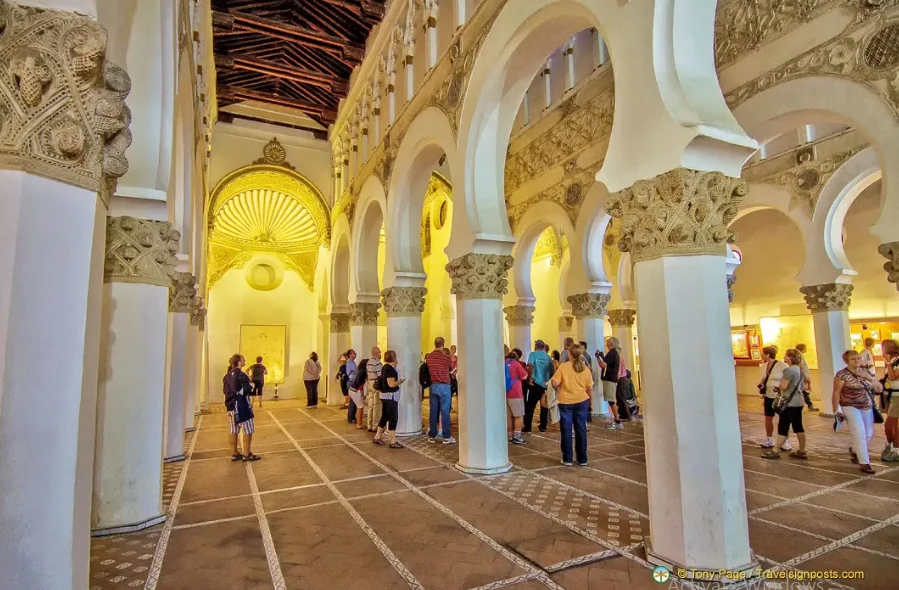
The Santa María la Blanca Synagogue in Toledo, Spain, is a remarkable testament to the city’s multicultural heritage. Initially built in the 12th century as a synagogue, it later served as a church and is now a museum. The synagogue’s architecture reflects a unique blend of Islamic, Christian, and Jewish influences, with beautiful horseshoe arches and intricate decorative details creating a serene and captivating atmosphere.
5. Monastery of San Juan de los Reyes
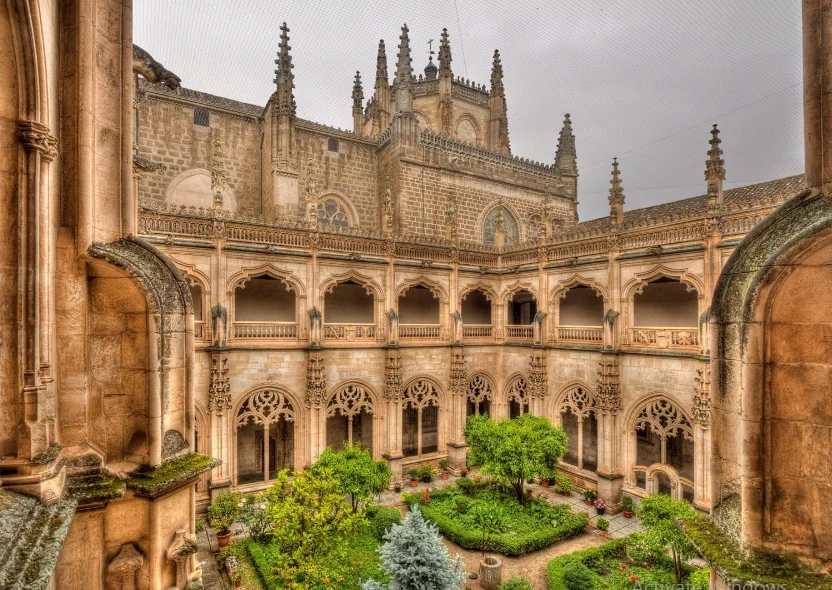
The Monastery of San Juan de los Reyes, situated in Toledo, Spain, is a splendid example of Gothic architecture. Built in the late 15th century, it was intended to commemorate the victory at the Battle of Toro. The monastery’s intricate cloisters, an impressive church, and tranquil gardens offer a peaceful retreat. It is renowned for its stunningly ornate detailing, intricate stone carvings, and elaborate ceilings.
6. Church of Santo Tomé
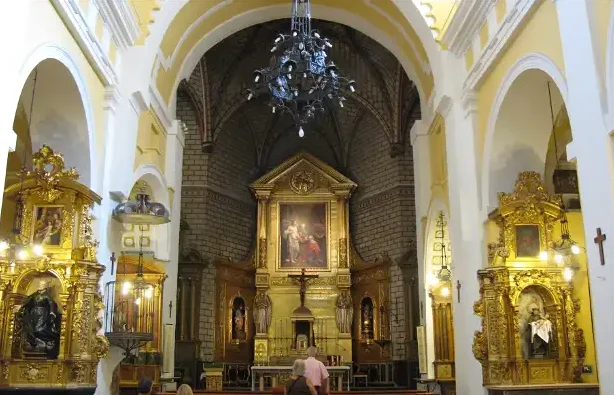
The Church of Santo Tomé, located in Toledo, Spain, is renowned for housing one of El Greco’s most famous paintings, “The Burial of the Count of Orgaz.” This 14th-century church boasts a blend of Mudéjar and Gothic architectural styles. Its modest exterior belies the grandeur of the interior, which features intricate artwork and a beautiful altarpiece. Visitors can admire the masterful brushwork of El Greco’s masterpiece while exploring this historic church.
7. El Greco Museum At Toledo Spain
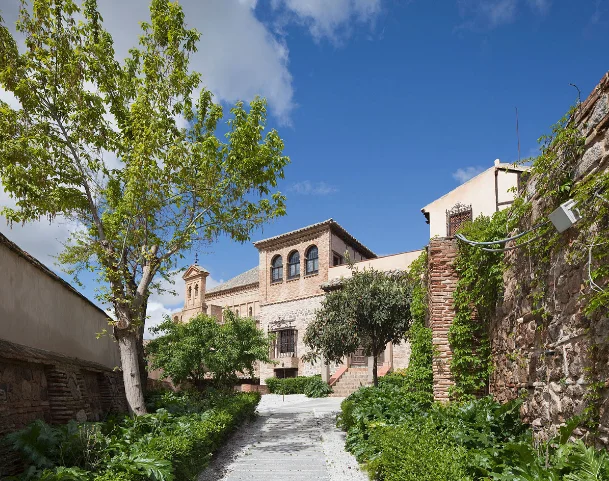
El Greco Museum in Toledo, Spain, is dedicated to the renowned Greek artist Doménikos Theotokópoulos, commonly known as El Greco. The museum showcases an impressive collection of his paintings, sculptures, and sketches. It offers visitors a glimpse into El Greco’s unique artistic style and significant influence on Spanish Renaissance art.
8. Plaza de Zocodover
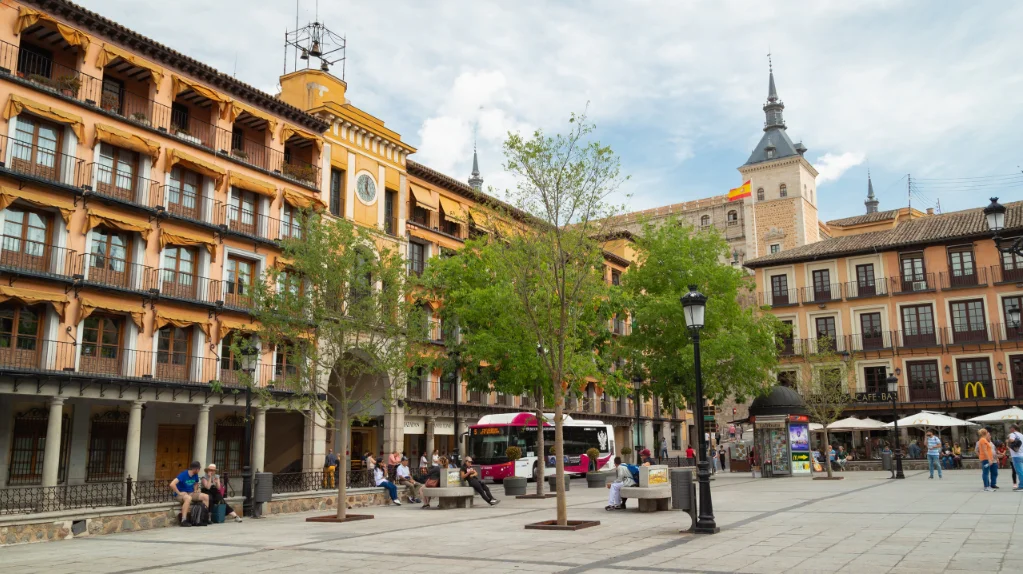
Plaza de Zocodover is a lively and historic square in Toledo, Spain. It has been a central gathering place for locals and visitors for centuries. Surrounded by charming buildings and bustling cafes, the square offers a vibrant atmosphere where you can enjoy street performances, shop for souvenirs, or soak in the vibrant ambience while sipping coffee.
9. Alcántara Bridge At Toledo Spain
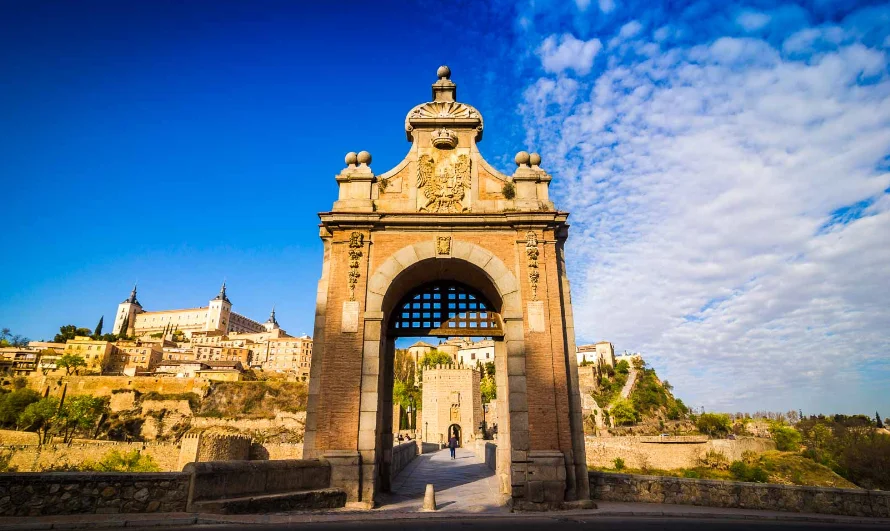
The Alcántara Bridge is an iconic landmark in Toledo, Spain, spanning the Tagus River. This medieval stone bridge dates back to the Roman era and is a testament to the city’s rich history. With its impressive arches and scenic views, the Alcántara Bridge is a must-visit attraction. Walking across the bridge allows visitors to appreciate the architectural beauty while capturing breathtaking panoramas of the surrounding landscape.
10. Toledo City Walls
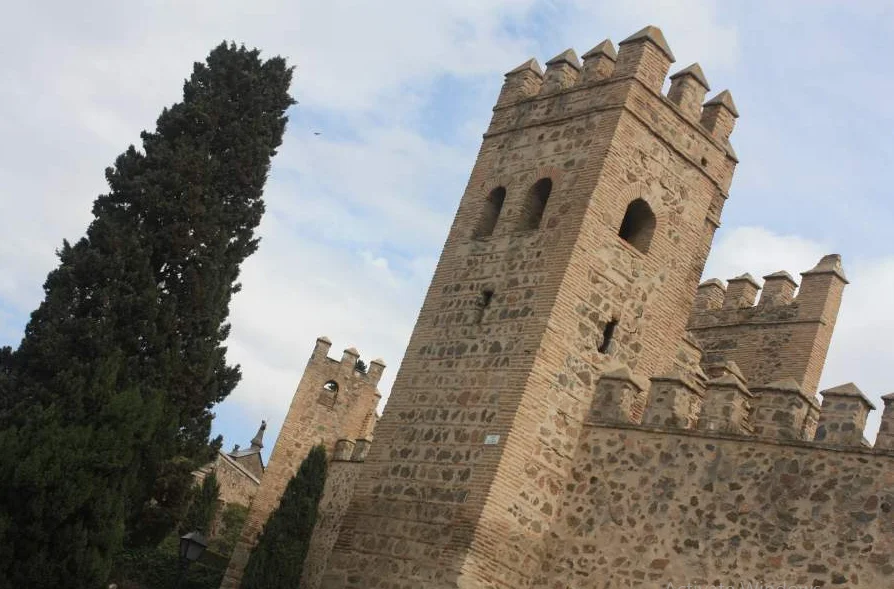
Toledo City Walls form a majestic fortification that encircles the historic centre of Toledo, Spain. Dating back to Roman times, these walls were expanded and fortified during the Middle Ages. Today, visitors can explore the well-preserved sections, including ancient gates and towers, while immersing themselves in the city’s rich heritage. The city walls offer panoramic views of Toledo and serve as a tangible reminder of its medieval past.
11. Mosque of Cristo de la Luz
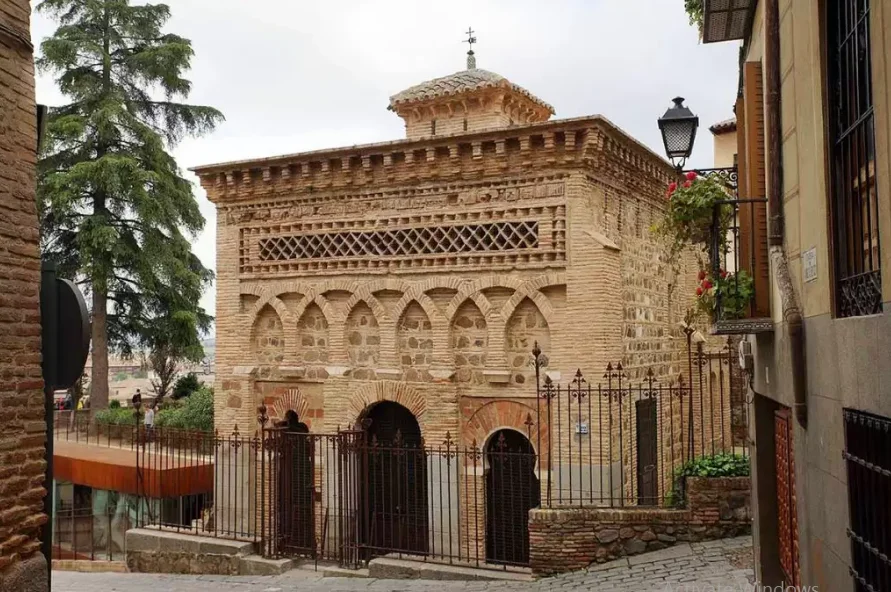
The Mosque of Cristo de la Luz is small but remarkable in Toledo, Spain. Built in the 10th century, it symbolizes the city’s diverse cultural history. The mosque features distinctive Mudéjar architecture, blending Islamic and Christian influences. Visitors can admire the intricately decorated horseshoe arches and experience the peaceful atmosphere that resonates with centuries of spiritual devotion.
12. Bisagra Gate At Toledo Spain
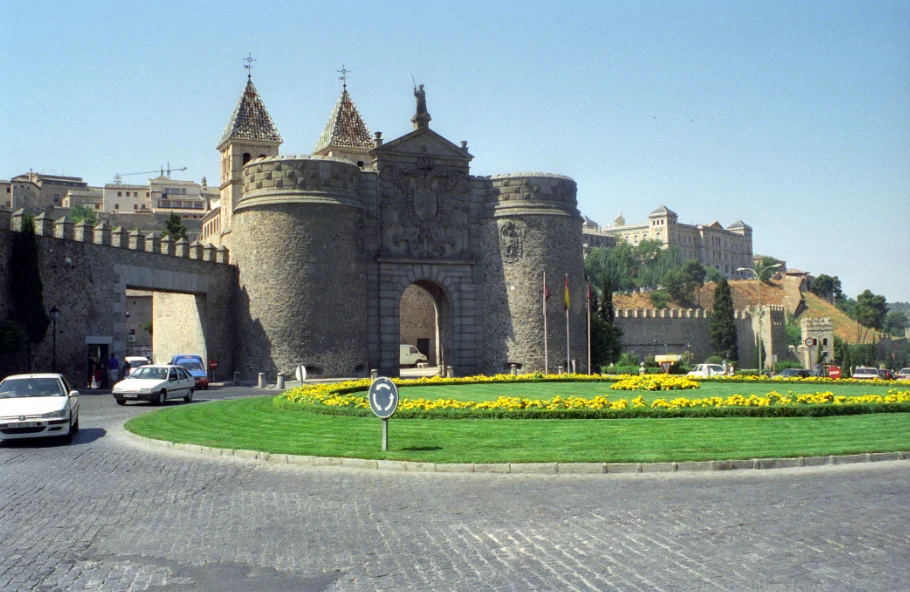
Bisagra Gate is one of the main entrances to the old city of Toledo, Spain. This magnificent gate, dating back to the 10th century, showcases Mudéjar and Gothic architectural elements. It served as a crucial access point and a defensive structure, protecting the city within its fortified walls. Today, visitors can walk through the Bisagra Gate and marvel at its imposing presence, transporting themselves to a bygone era steeped in history and grandeur.
13. Church of San Ildefonso
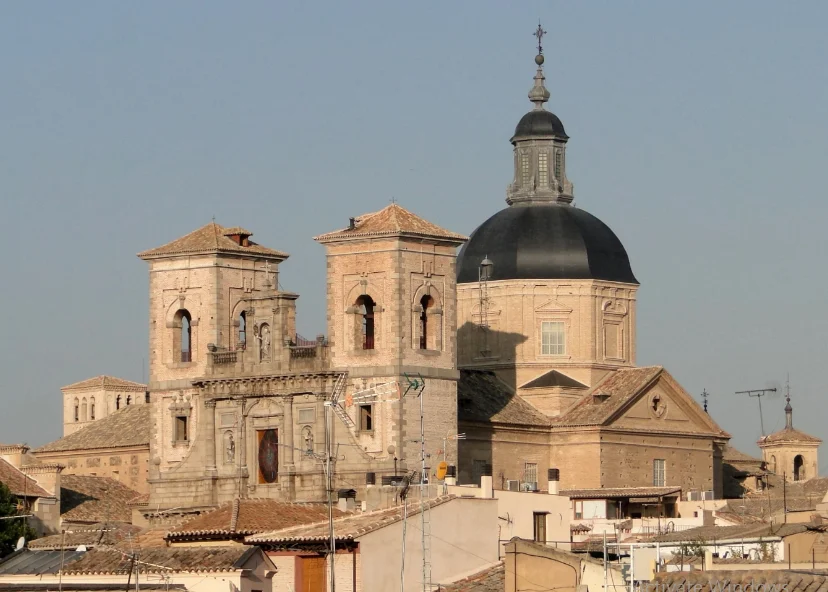
The Church of San Ildefonso, also known as the Jesuit Church, is an architectural gem in Toledo, Spain. Built in the 17th century, this Baroque-style church features an elaborate façade adorned with intricate sculptures and reliefs. Visitors are greeted with a stunning interior boasting ornate altarpieces, marble columns, and magnificent frescoes. The Church of San Ildefonso is a testament to the city’s religious heritage and offers a serene space for reflection and admiration.
14. Hospital de Tavera At Toledo Spain
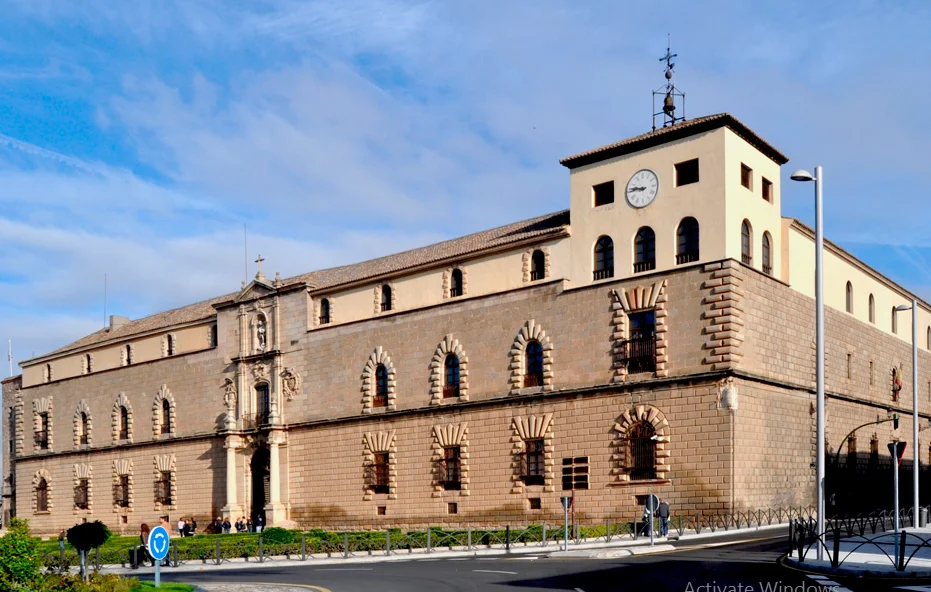
The Hospital de Tavera, located in Toledo, Spain, is a historic building that showcases impressive Renaissance architecture. Built in the 16th century, this former hospital was commissioned by Cardinal Juan Pardo de Tavera.
Today, the building serves as a museum and houses an exceptional art collection, including paintings by El Greco. Visitors can explore the hospital’s beautifully decorated rooms, lush gardens, and chapel, immersing themselves in this architectural masterpiece’s grandeur and cultural significance.
Conclusion
Toledo, Spain, is a timeless gem that captures the hearts of those who visit. Its rich history, diverse cultural heritage, and remarkable architectural wonders create an unforgettable experience.
Whether strolling through its ancient streets, admiring the masterpieces of El Greco, or immersing oneself in the city’s religious and artistic treasures, Toledo always leaves a lasting impression. The blend of Christian, Jewish, and Muslim influences and its picturesque setting make Toledo a destination that resonates with history enthusiasts and travellers seeking a truly immersive cultural experience.
FAQs
What is the best time to visit Toledo, Spain?
The best time to visit Toledo is during spring and autumn when the weather is pleasant, and tourist crowds are smaller. The city’s narrow streets can get crowded during the peak summer, while winters can be cold and rainy.
How can I reach Toledo from Madrid?
Toledo is conveniently located just 70 kilometres south of Madrid, making it easily accessible from the capital. The most common way to reach Toledo from Madrid is by train, with frequent departures from Madrid’s Atocha station.
Are there any specific attractions to explore in Toledo besides the historical sites?
Toledo has several attractions besides historical sites. El Greco and Sephardic museums are open to art lovers. Marzipan and Manchego cheese are popular Castilian dishes. Hikers may explore the landscape or cruise the Tagus River.

You must be logged in to post a comment.